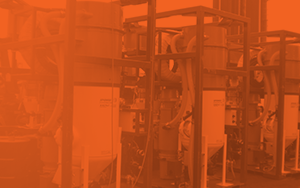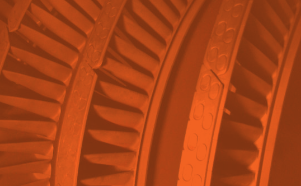At a Kimberly-Clark Australia facility, there was significant corrosion on the grating of their coliseum tower floors. Years of exposure to damp, sticky conditions had caused a build-up of sap on the steel surfaces, damaging the coatings and causing extensive corrosion. This was impacting work environments, and they knew they needed to remove the contaminants and blast all of the corroded steel for surface prep prior to recoating.
Blasting at this coliseum tower presented unique logistical challenges. The blasting work had to be done four stories high, with limited anchor points for equipment and workers to attach to. This unique environment also posed difficulties with setting up containment.
The sap contamination removal was incredibly difficult. There was substantial sap build-up and extensive corrosion underneath the sap that needed to be removed. The specs called for a cleanliness level of near-white blast cleaning with a profile of 50 microns (2 mils).
In order to tackle this tough contamination and corrosion removal, multiple cleaning methods were attempted. Both hand-tooling and wire-brushing failed to remove the stubborn sap build-up. This was a very slow process that proved to have high labor costs. Hot-water blasting, while effective in other environments, did not have the ability to properly remove the thick sap build-up. Ultimately, the chosen method for sap and corrosion removal on steel was Sponge Blasting. This was selected for its ability to remove the contaminants quickly while properly profiling the steel for new coatings.

Blasting with Sponge Media was also selected due to its low-dust, recyclable capabilities. The challenges of blasting in the four-story coliseum tower with limited containment were no problem for Sponge-Jet. Sponge Media’s low-dust, low-rebound capabilities allow for blasting in sensitive areas with limited containment, without having to worry about things like grit intrusion in nearby equipment. The recyclability of the Sponge Media was also a contributing factor. Despite the stickiness and thickness of the sap, the Sponge Media was able to be recycled and reused up to four times without redeposition.
By the end of the project, the floor grating and all steel surfaces were left clean of sap and corrosion. From walkways to handrails, stairs, and steel supports, all the grating was Sponge Blasted to the specified profile, allowing for new coatings to properly adhere, ultimately extending their life. The facility was so happy with the outcome of the project that they decided to store their extra, unused Sponge Media for future facility maintenance applications.
Regular facility maintenance is essential for keeping factories and plants operational and productive. Blasting with Sponge Media in these scenarios allows for properly cleaned and prepared surfaces with minimal labor disruption or unnecessary shutdown.








